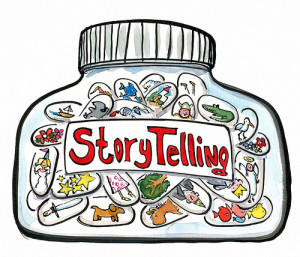Storytelling for Bully Prevention

Bullying can begin as early as preschool and it intensifies as the child gets older. To help children fight this, Sue Black, an Olweus certified bullying prevention trainer, developed an interesting method to help people gain better awareness on the many aspects of bullying. She uses storytelling!
Besides raising awareness, her program also aims to help children develop bullying prevention strategies, and it also encourages those who witness bully behavior to act against it. Furthermore, it informs bullies that this type of behavior should not be allowed and should be stopped or there will be consequences to their actions.
Sue’s methods are quite creative. She uses stories to highlight the behaviors of the bully, the bullied, and the bystander, while rewriting these familiar stories from another point of view to help children develop empathy. This way observers get to talk about the concepts through the experiences of story characters rather than real people. This storytelling method also helps children concentrate on the subject at hand. And since the stories are quite memorable children can easily recall the stories and their meanings.
Here is an actual sample of a story Sue changed to fit the point she wanted to convey:
That wolf in the forest was just picking up the candy wrappers Little Red was leaving behind as she walked to Granny’s. She’s the one who started calling him names and acting all snooty. By the time they got to Granny’s, Little Red started making false accusations. No self-respecting wolf would ever eat a girl, but the crazy kid started screaming and that’s when the lumberjack came in. By the time it was over it was the wolf who left with a bad reputation while Little Red lived happily ever after.
You may have noticed that Sue changed the point of view character of the story from Red Riding Hood to the wolf. This way the observers actually get to see the wolf’s side of things and learn to show empathy to others. She actually tell stories that have less to do with the bully and a lot more to do with standing up for what’s right. In this case, the wolf could have voiced out that Little Red was making false accusations, but instead he stayed silent and suffered for it.
Sue teaches bystanders to react to bullies because they actually have the power to make these bullies stop. Here’s an interesting fact I read: When bystanders speak up, stand with, or walk away with the bullied student, they actually stop the bully behavior 50% of the time, and often in the first 10 seconds.
What I have shared here is just a short overview of this unique bullying prevention technique. For more information on Sue Black’s method, check out this link.
Sources
http://www.sue-black.com/pdfs/StoryForBullyPrevention.pdf
http://www.youandme-bullyfree.com/about.html
http://blog.storynet.org/just-one-piece-of-the-puzzle-storytelling-for-bullying-prevention
http://www.wisdomtales.com/bullyprogram.html
Photo Credits
Photo By Frits Ahlefeldt-Laurvig via StockPholio.com
The post Storytelling for Bully Prevention appeared first on Richard Ward Books.



